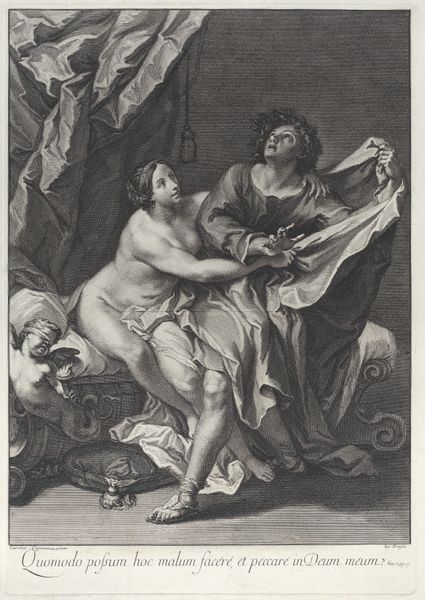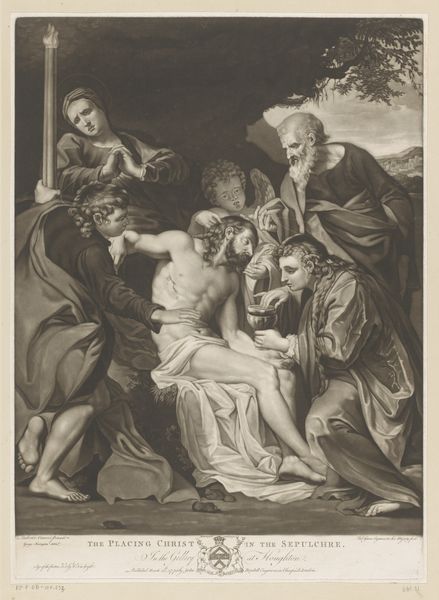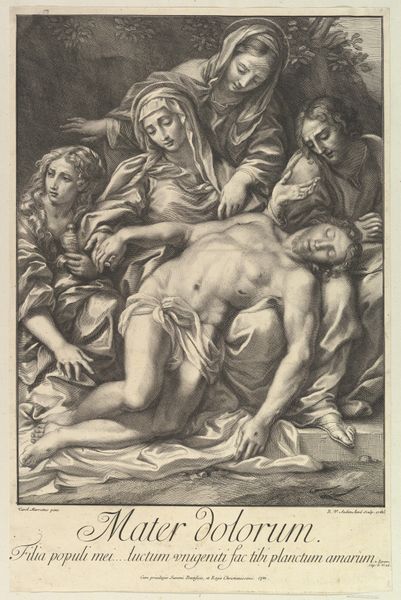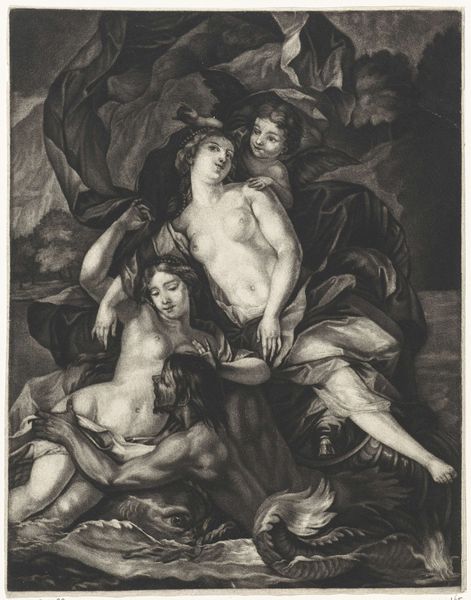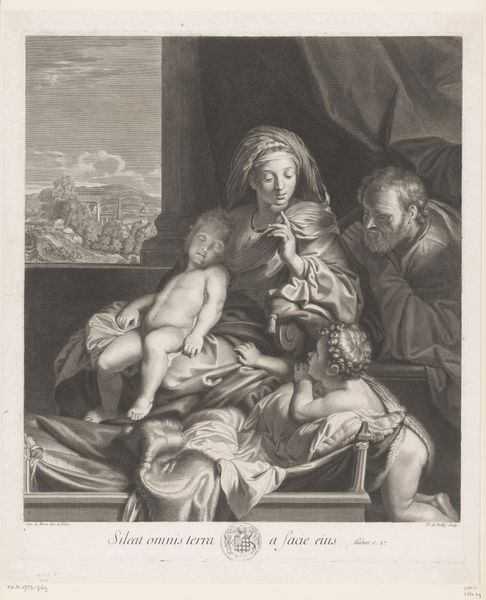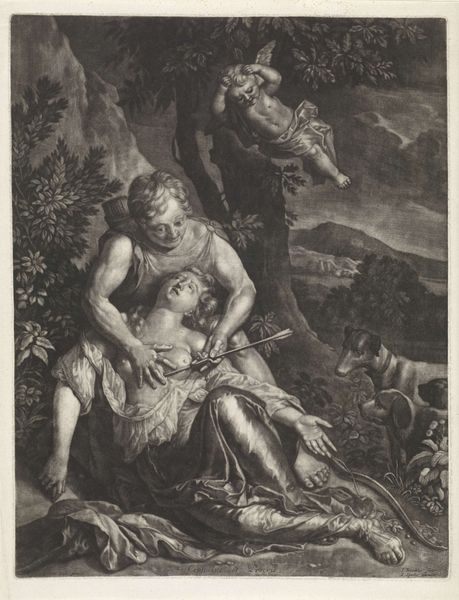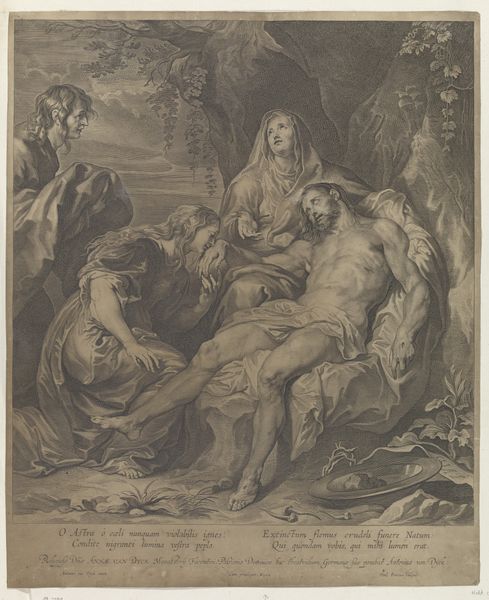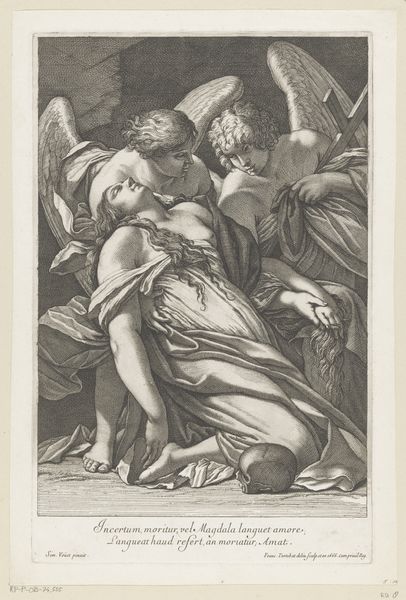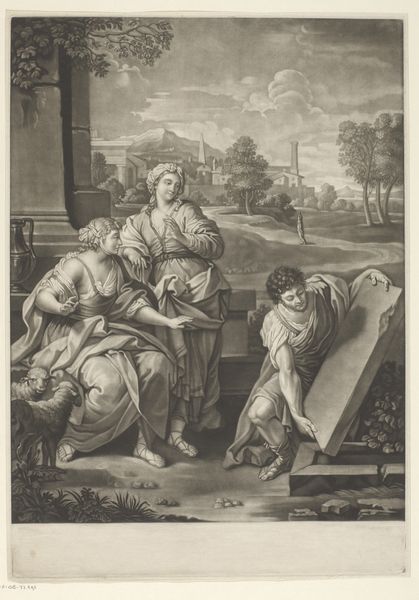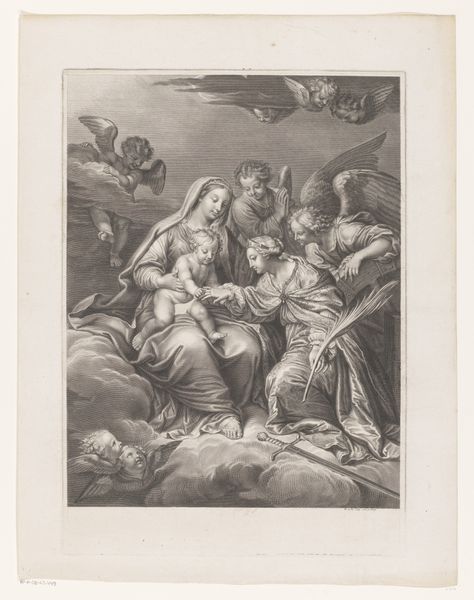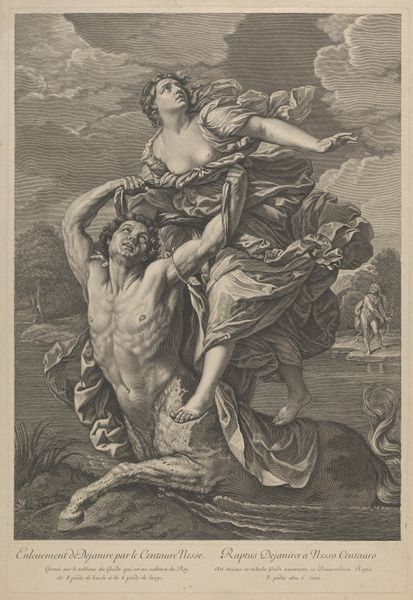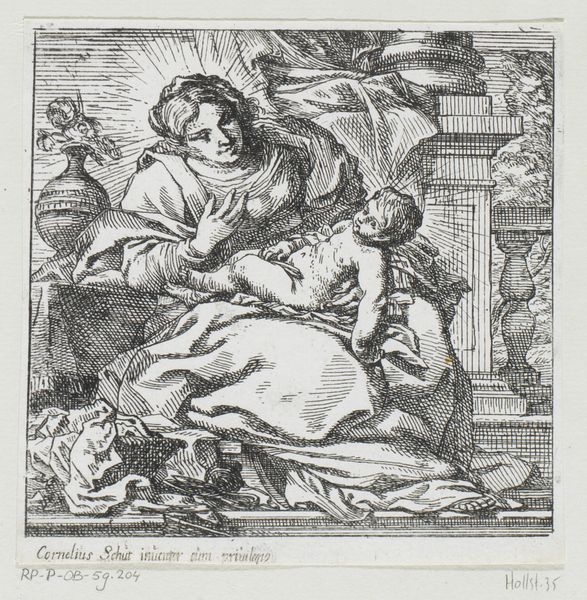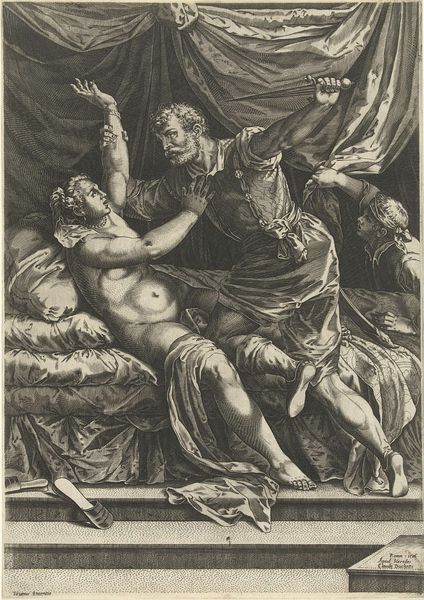
painting, oil-paint
#
allegory
#
baroque
#
painting
#
oil-paint
#
figuration
#
oil painting
#
history-painting
Copyright: Public domain
Editor: This painting, "Agony in the Garden," was created around 1620 by Giulio Cesare Procaccini, using oil paints. It definitely has this heavy, emotional weight. How do you interpret this work? Curator: Immediately, I see the tension between the divine and the human, a core concept of Baroque art. Procaccini is inviting us to contemplate the psychological and spiritual ordeal. Look at how Christ is portrayed: supported but also very isolated. He's yearning, yet receiving comfort. Do you see any conflict or contradictions embedded in these dual figures? Editor: I do, the angel seems to have dark, almost menacing wings in contrast to the gentle expression. Is that a common depiction? Curator: Absolutely, think about the history of art— wings and darkness, light and sorrow— these are potent visual motifs, almost primal in their communicative power. Black wings evoke a different kind of angel, not as a friendly guardian but rather the unknown aspect of faith. That interplay suggests a cultural memory of both salvation and looming doom, doesn't it? The men at the bottom sleeping reinforce a type of disconnect as well, an intentional selection. Editor: That makes sense, considering the figures are disciples but cannot stay awake during Christ's most agonizing time. Curator: Precisely. What does that imply to you? Think about the image, memory, faith, culture. Editor: Well, it hits me that everyone in that painting besides the angel is just failing him and the angel shows how faith is helping him. Curator: Indeed. Procaccini masterfully employs symbols to capture the complex layers of faith and humanity's perpetual struggle. These historical symbols are used today! Editor: Thanks for untangling this history within an image! Curator: My pleasure. Hopefully that new understanding empowers the viewing of cultural context today!
Comments
No comments
Be the first to comment and join the conversation on the ultimate creative platform.
